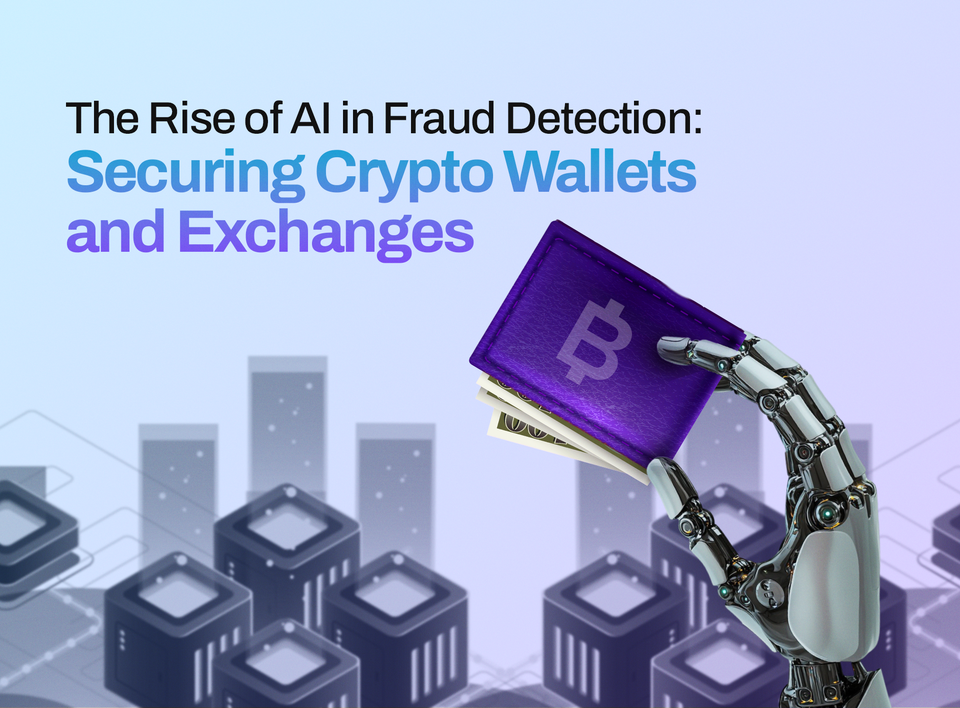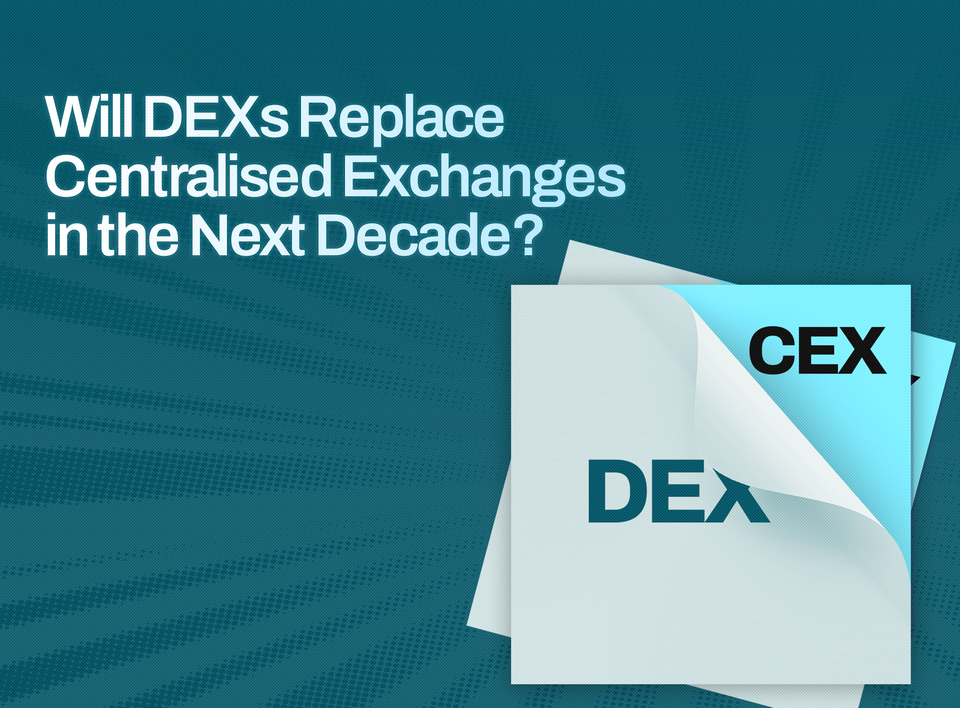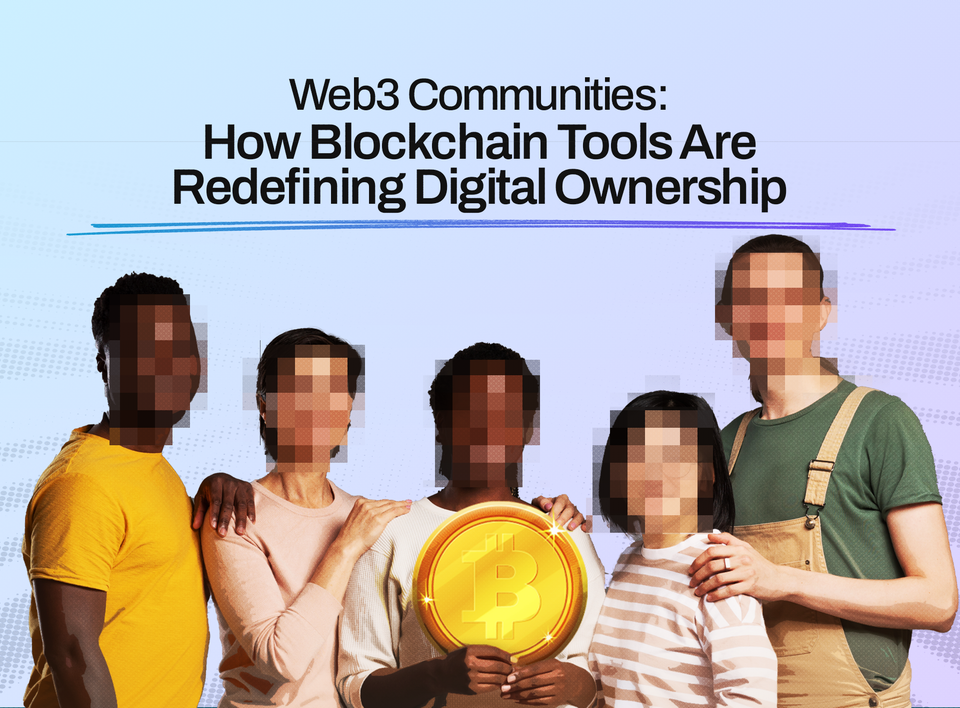What Is Blockchain Confirmation & Why Does It Take So Long?
Learn what blockchain confirmation is, why transactions take so long, and how delays affect crypto users. Discover how Obiex’s swap without confirmation feature lets you skip waiting and trade instantly.
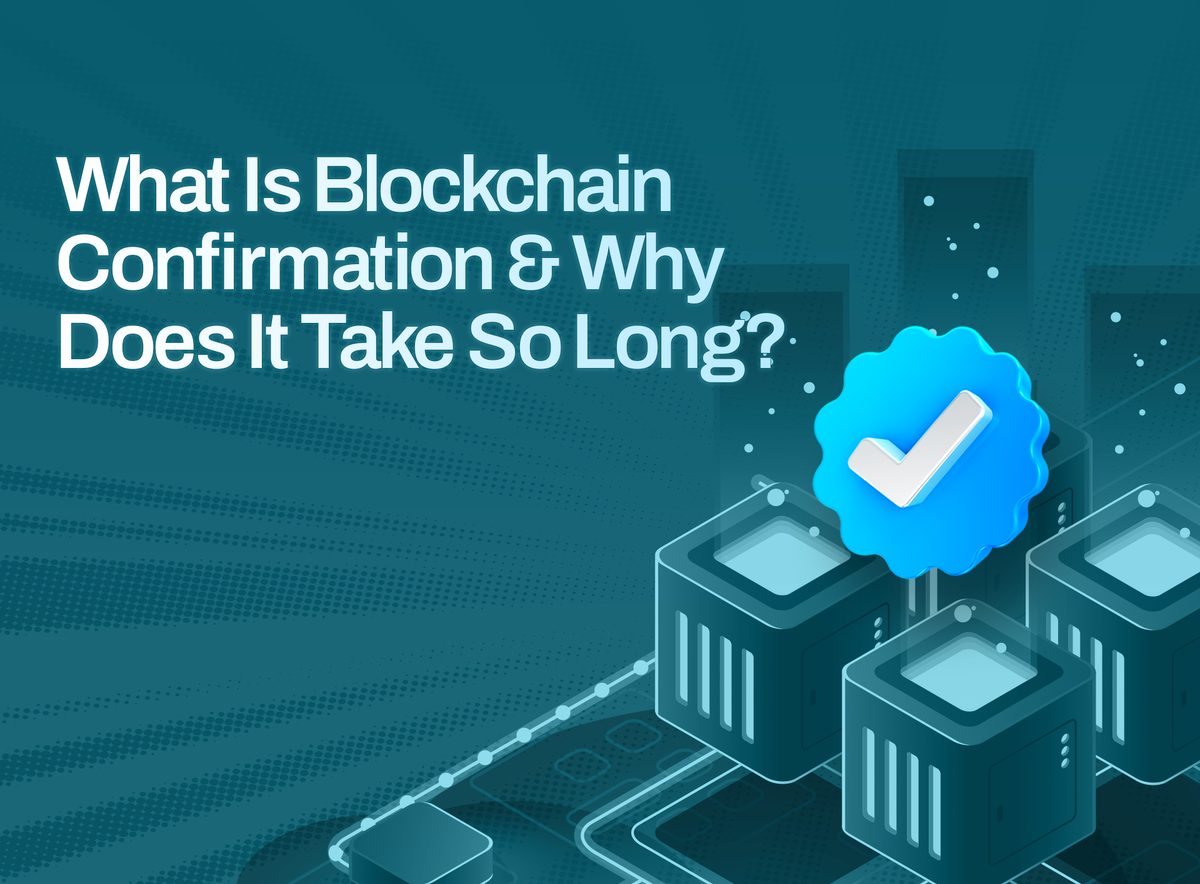
Table of Contents
- What Is Blockchain Confirmation?
- How Blockchain Confirmation Works
- Why Does Blockchain Confirmation Take So Long?
- How Long Do Confirmations Usually Take?
- Why Blockchain Confirmation Delays Are a Problem for Traders
- How Obiex Solves the Blockchain Confirmation Problem
- More Tips to Reduce Blockchain Confirmation Wait Times
- To Recap
- FAQs
What Is Blockchain Confirmation?
A blockchain confirmation is proof that your crypto transaction has been checked and added to the blockchain. It’s the “stamp of approval” that shows your payment or swap is valid and officially recorded.
When you send crypto, the blockchain acts as the public ledger, and thousands of computers around the world (called miners or validators) work together to verify the authenticity of your transaction before writing it into the blockchain.
Until your transaction receives this confirmation, it is considered “pending” and could still be rejected, delayed, or replaced by another transaction. Once confirmed, it becomes part of the permanent blockchain history and cannot be changed.
Who Handles the Confirmations?
- On Bitcoin, confirmations are handled by miners who solve cryptographic puzzles to add new blocks.
- On Ethereum and many newer blockchains, confirmations are handled by validators who stake crypto to secure the network.
Both miners and validators act like independent referees, ensuring that every transaction follows the rules and is fair.
How Blockchain Confirmation Works
Every crypto transaction goes through a process before it’s fully approved on the blockchain. Here’s how it works:
Step 1: You create a transaction
You decide to send Bitcoin, swap Ethereum for USDT, or transfer stablecoins. Once you click “Send” or “Swap”, your request is created and broadcast to the blockchain network.
Step 2: The network sees your transaction
Your transaction is sent out to thousands of computers (called nodes) connected to that blockchain. These nodes spread the information to each other, so the entire network knows you want to make a transfer.
Step 3: Miners or validators pick it up
Now it’s time for miners (on Bitcoin) or validators (on Ethereum and other blockchains) to check if your transaction is valid. They vet your transaction based on the following:
- Do you really have the funds you’re trying to send?
- Is your wallet allowed to make this transfer?
- Did you pay enough network (gas) fees?
If everything checks out, your transaction is placed in a “waiting room” called the mempool, where miners/validators choose which transactions to confirm first.
Step 4: Your transaction is added to a block
Once selected, your transaction is grouped together with many others into a block.
- Think of a block like a digital box that stores hundreds or thousands of transactions.
- When the box is full, miners/validators seal it and attach it to the chain of previous blocks. That’s why it’s called a blockchain.
This is your first confirmation.
Step 5: More blocks, more confirmations
After the block containing your transaction is added, more blocks continue to be added on top of it. Each new block gives your transaction another confirmation, making it more secure and harder to reverse.
For example:
- On Bitcoin, most exchanges wait for 6 confirmations before considering the transfer final. That means your block needs 5 more blocks added after it, which usually takes about 1 hour in total.
- On Ethereum, confirmations are faster, but platforms still prefer multiple blocks for safety.
Why Does Blockchain Confirmation Take So Long?
1. Network Congestion (Too Many People at Once):
Blockchains can only process a certain number of transactions per second.
- Bitcoin can handle about 7 transactions per second (TPS).
- Ethereum can handle around 15–30 TPS (before scaling solutions like Layer 2s).
So, when too many people are sending crypto at the same time, the network gets congested.
2. Gas or Network Fees (Low Fee, Longer Wait):
On most blockchains, miners/validators pick transactions that pay the highest fees first.
- If you set a low fee, your transaction sits in the “waiting room” (the mempool) until someone decides to process it.
- If the network is busy, this could take minutes or even hours.
It is almost the same as paying for express delivery versus regular shipping. Higher fees = faster delivery.
3. Block Size and Block Speed:
Each block has a fixed size and time limit:
- Bitcoin blocks are about 1MB and take 10 minutes to be mined.
- Ethereum blocks are smaller but appear every 12 seconds.
If your transaction doesn’t make it into the next block, it has to wait for the following one.
4. Security Requirements (Multiple Confirmations):
Even after a block is added, most exchanges and wallets don’t trust just one confirmation. They wait for several new blocks to be added on top.
- This reduces the risk of fraud or double-spending (someone trying to reverse a transaction).
5. Mining Difficulty and Validator Load:
- On Bitcoin, miners compete to solve difficult puzzles. If the puzzle takes longer, confirmations slow down.
- On proof-of-stake blockchains like Ethereum, validators take turns confirming blocks, but if there’s too much load, things can still get delayed.
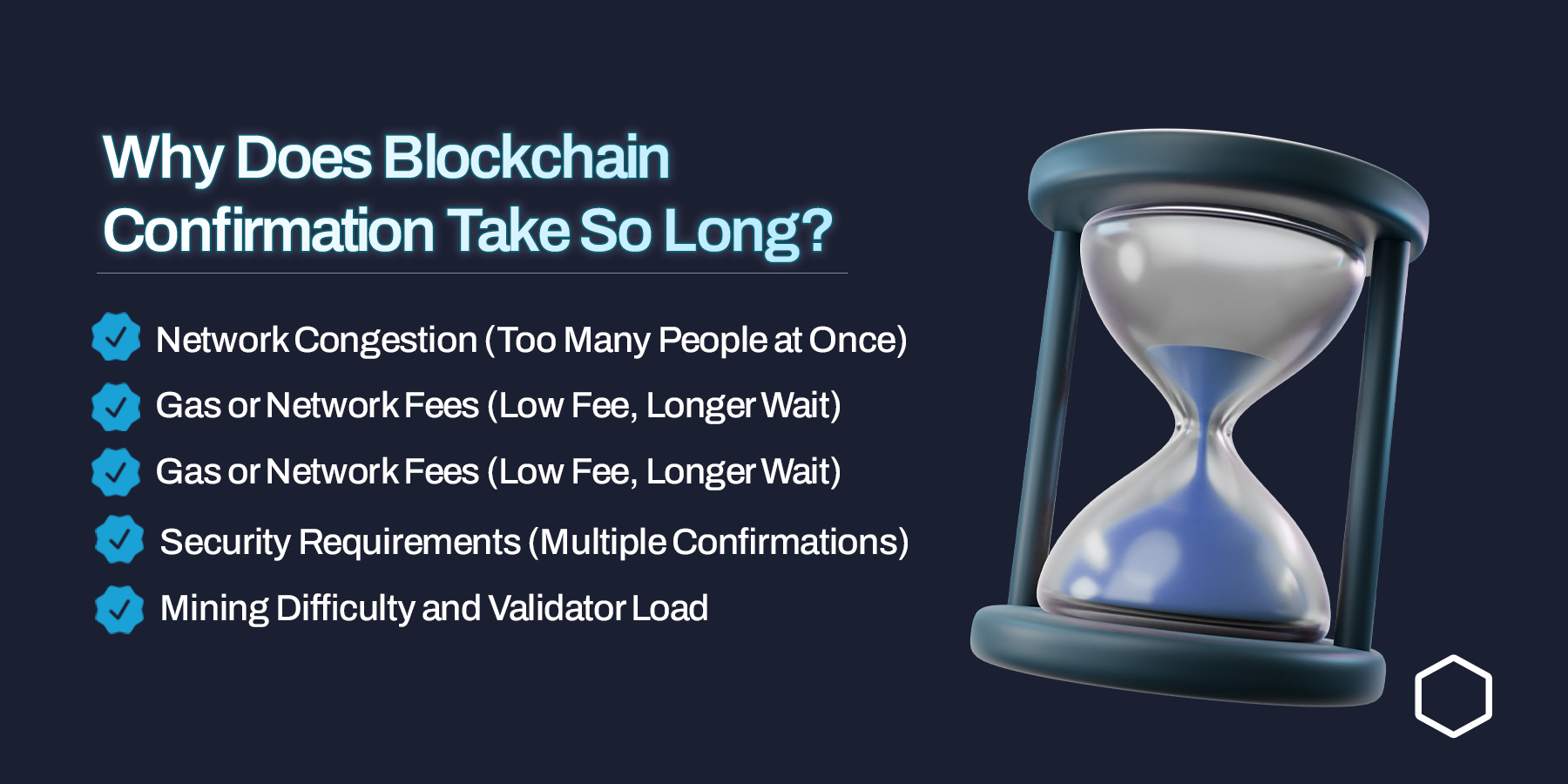
How Long Do Confirmations Usually Take?
1. Bitcoin (BTC):
- Block Time: 10 minutes per block.
- Confirmations Needed: Most exchanges require 6 confirmations before considering a transaction final.
- Total Wait: About 1 hour on average.
Example: If you send Bitcoin to a friend, they may not see the funds as “confirmed” until roughly an hour later.
2. Ethereum (ETH):
- Block Time: 12 seconds per block.
- Confirmations Needed: Typically 12–30 confirmations, depending on the platform.
- Total Wait: A few minutes on average.
👉 Faster than Bitcoin, but if the network is busy or fees are low, you can still face delays of 10 minutes or more.
3. Stablecoins (USDT, USDC, BUSD, etc.):
Stablecoins take on the speed of the blockchain they run on:
- USDT on Ethereum (ERC-20): A few minutes (similar to ETH).
- USDT on Tron (TRC-20): Much faster, usually 1–2 minutes.
- USDC on Solana: Almost instant, but congestion can cause short waits.
4. Layer 2 Solutions & Fast Networks:
- Polygon (MATIC): Transactions confirm in seconds.
- Arbitrum & Optimism: Fast Layer 2 solutions on Ethereum, usually under a minute.
- Lightning Network (Bitcoin Layer 2): Instant transactions, but not all wallets support it.
Why the Difference?
- Bitcoin prioritises security, so it’s slower.
- Ethereum balances speed and decentralisation, but gets congested.
- Layer 2s and newer blockchains are built to handle transactions faster, but not every exchange or wallet supports them.
Why Blockchain Confirmation Delays Are a Problem for Traders
1. Missed Market Opportunities:
Crypto prices move fast, sometimes within seconds.
- If you try to swap Bitcoin for USDT and the network takes 30 minutes to confirm, the price could change drastically before your swap goes through.
- By the time the transaction clears, you may have bought at a higher price or sold at a lower one.
Imagine trying to buy ETH at $2,700, but by the time your transaction confirms, ETH is already $2,750. That’s an instant loss because of the delay.
2. Slippage (Getting Less Than You Expected):
Slippage happens when the final price of your swap is different from what you expected.
- On a fast-moving market, even a few minutes of waiting can make a huge difference.
- If confirmations are slow, you could end up with fewer coins than planned, which adds up over time.
3. Frustration in Cross-Border Transfers:
Many Africans and global users rely on crypto for remittances and payments.
- If it takes hours for a Bitcoin transfer to confirm, it delays important payments like school fees, bills, or emergencies.
- The uncertainty of contemplating whether it is pending, stuck, or lost creates extra stress.
4. Higher Costs When You Try to Speed It Up:
If you don’t want to wait, you often have to pay higher gas or network fees to push your transaction forward.
- On Ethereum, gas fees have spiked to $50+ per transaction during peak congestion.
- For smaller traders, that’s too expensive, but the alternative is waiting longer.
5. Uncertainty and Stress:
Pending transactions create doubt. You begin to ask questions like:
- Did I send it correctly?
- Is my money stuck?
- Will I lose it if it never confirms?
For new and intermediate traders, this can be intimidating and discouraging.
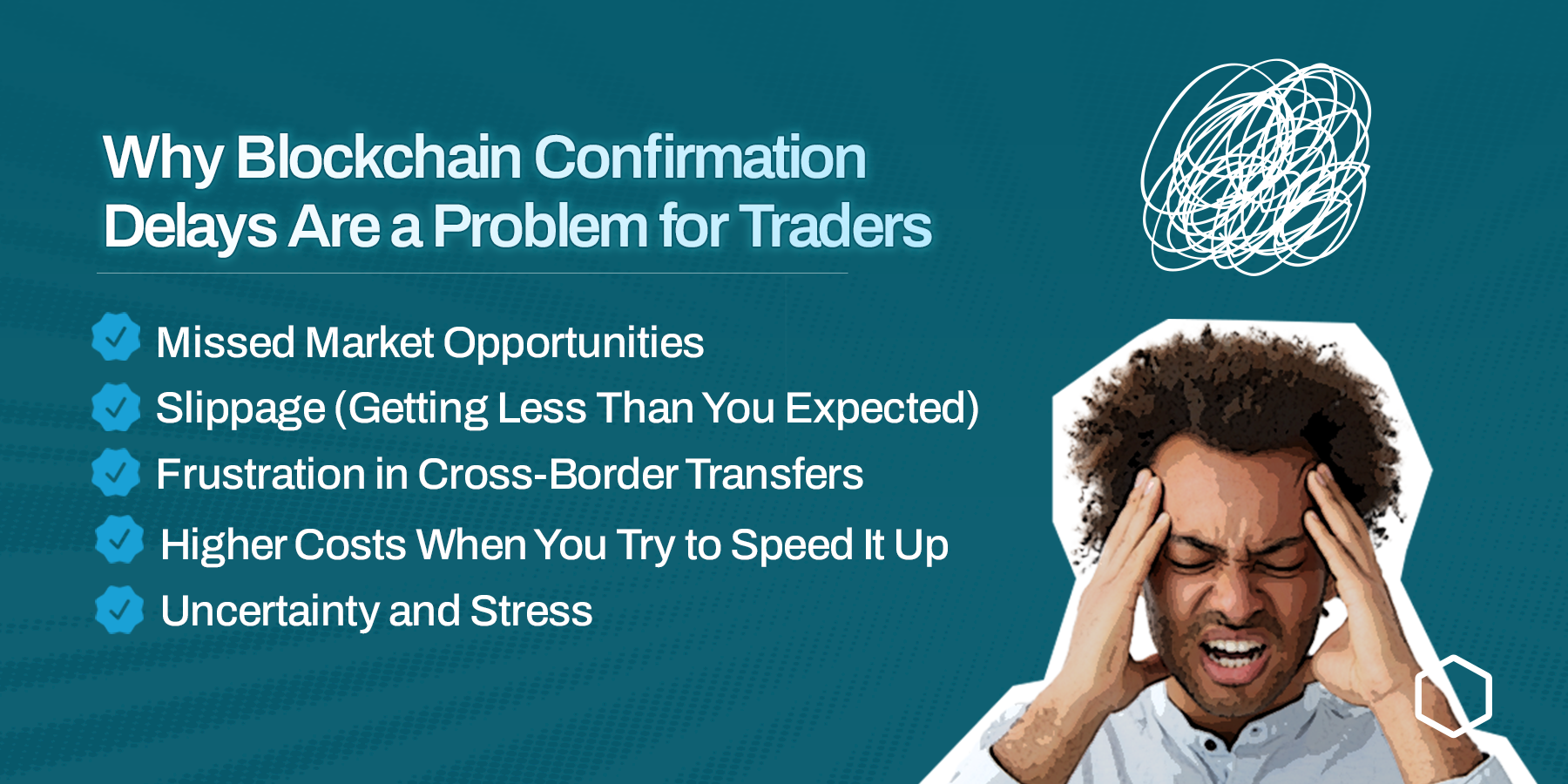
How Obiex Solves the Blockchain Confirmation Problem
Most traders accept blockchain confirmation delays as “just the way things are.” But at Obiex, we asked a simple question: Why should users wait at all?
That’s why we created the Swap Without Confirmation feature. Instead of waiting minutes or hours for the blockchain to approve your transaction, Obiex lets you swap instantly within the app. No pending, no stress, no missed opportunities.
What Is Swap Without Confirmation?
It’s a feature on Obiex that allows you to exchange one cryptocurrency for another immediately, without waiting for the blockchain to process multiple confirmations.
Instead of relying on miners or validators to approve your swap, Obiex handles it for you instantly inside the platform.
Why This Matters
- Speed: You don’t wait for 6 confirmations on Bitcoin or 30 confirmations on Ethereum. The swap is instant.
- Accuracy: The price you see when you click swap is the price you get. No slippage caused by delays.
- Convenience: No more refreshing your wallet or wondering if your transaction is stuck.
- Everyday Usability: Perfect for African traders, active investors, and anyone who needs fast, reliable swaps.
Obiex vs. Traditional Exchanges
More Tips to Reduce Blockchain Confirmation Wait Times
If you ever find yourself stuck waiting for blockchain confirmations on another platform, here are a few ways to speed things up:
1. Pay Higher Network Fees:
Most blockchains prioritise transactions that pay higher fees.
If you set your fee too low, your transaction goes to the back of the line. By paying a little extra, miners/validators are more likely to pick your transaction first.
2. Avoid Peak Congestion Hours:
Crypto networks get busier at certain times, especially when markets are moving quickly.
- Ethereum and Bitcoin can experience significant slowdowns during big trading events or price swings.
- If possible, try sending or swapping during quieter periods.
3. Use Faster Networks (Layer 2 Solutions):
Some networks are built to handle transactions quicker:
- Polygon, Arbitrum, Optimism (Ethereum Layer 2s): faster and cheaper confirmations.
- Tron (TRC-20 USDT): much quicker than Ethereum-based USDT.
- Lightning Network (Bitcoin Layer 2): instant Bitcoin transactions, supported on certain wallets.
If speed matters, choose a blockchain designed for it.
4. Pick Exchanges With Smart Processing:
Some exchanges process transactions faster by managing confirmations internally. They may credit your balance before the blockchain finishes all confirmations.
This is one of the reasons Obiex’s Swap Without Confirmation stands out. It takes the waiting completely out of the equation.
5. Double-Check Your Fees Before Sending:
Many wallets allow you to set custom fees. Always confirm whether the fee you set is enough for the current network conditions.
To Recap
Blockchain confirmations protect transactions, but they also create delays that frustrate traders and cost money.
With Obiex Swap Without Confirmation, you don’t have to wait. You can trade instantly, skip slippage, and stay ahead of the market.
Don’t let confirmations slow you down. With Obiex’s swap without confirmation feature, you can swap instantly, skip delays, and stay ahead of the market.
👉Download the Obiex app today and trade smarter.
FAQs
Q1. What is blockchain confirmation?
It’s the process of verifying and recording your transaction on the blockchain.
Q2. Why does blockchain confirmation take so long?
Because of congestion, block size limits, fees, and security requirements.
Q3. How many confirmations does Bitcoin need?
Most exchanges require 6 confirmations, which takes about 1 hour.
Q4. How fast is Ethereum confirmation?
Blocks are 12 seconds, but multiple confirmations are usually needed.
Q5. What happens if my transaction is stuck?
You may need to wait longer or pay a higher fee for miners to pick it up.
Q6. Can I speed up blockchain confirmation?
Yes, by paying higher gas fees or using faster networks (Layer 2s).
Q7. Why do exchanges wait for multiple confirmations?
To reduce fraud risks like double-spending.
Q8. What is slippage in crypto swaps?
It’s when the price changes before your transaction is confirmed, causing you to lose value.
Q9. How does Obiex avoid blockchain delays?
Obiex uses Swap Without Confirmation, which processes swaps instantly on the platform.
Q10. Who should use Obiex Swap Without Confirmation?
Active traders, cross-border senders, stablecoin users, and anyone tired of waiting for blockchain confirmations.
Disclaimer: This article was written to provide guidance and understanding. It is not an exhaustive article and should not be taken as financial advice. Obiex will not be held liable for your investment decisions.

